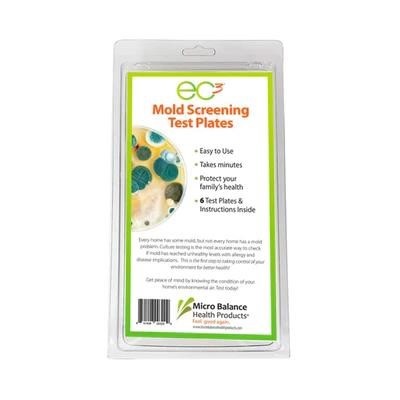Positive Health Online
Your Country

Why Can't I Lose Weight?
listed in environmental, originally published in issue 284 - February 2023
Why Can’t I Lose Weight?
It’s January and you probably have some new year resolutions in regards to your health! Weight loss is probably the most common and there will be numerous fitness and nutrition experts giving advice on what you should do on TV, Instagram and Facebook.
The media reminds us frequently that obesity is on the rise as is the incidence of Type 2 diabetes, generally the two often go hand in hand. Certainly, abundant processed foods, decreased physical activity, high sugar intake, and large portion sizes contribute to these issues. However, have you considered that toxins may have a major role to play in making things worse?
There are numerous toxins found in our environments, food, body care products and water just to name a few sources, but what if you are living in an environment 24/7 that is toxic to you and may be impeding your ability to losing weight as well as contributing to other health challenges!
What’s Often in Plain Sight and Also Hidden?
What comes to mind when you think of mould? Maybe it’s the forgotten bread in the breadbin that’s developed a furry coat, or maybe it’s the damp walls of your university student digs. However, you may not naturally link it with the numerous mental and physical health complaints that mould exposure can cause or exacerbate.
For more information on how mould affects your health and solutions to recovery please see my earlier article http://www.positivehealth.com/article/environmental/are-you-sick-from-mould as well as https://www.energizemindbody.com/category/blog/
The Mechanisms of Toxins at Work
Weight fluctuation during or after exposure to mould and mycotoxins is not unusual. A number of people will lose weight and/or muscle mass due to damage to the small intestinal lining where absorption of nutrients takes place as well as developing food allergies / sensitivities.
Malnourishment and dietary limitations which can often be extreme for mould sufferers can make eating unpleasant and uncomfortable resulting in weight loss. There are also significant numbers of people who actually gain weight and experience great difficulty losing it, even when their environment has been cleared of mould. Toxins are stored in fat which can be part of the reason for this weight gain, but a hormone called leptin also plays a role. As you will see, not only does leptin influence sugar metabolism and insulin levels, but it also controls hunger signalling, fat storage, and therefore overall toxin accumulation in the body.
The mechanisms of Type 2 diabetes are complex; the issue of cell membrane damage and subsequent insulin resistance cannot be overlooked. In a nutshell, increased toxicity leads to increased cell membrane resistance, which then leads to increased insulin production but poor utilization of the excess insulin, leads to higher blood sugar levels, and so the cycle goes on. The addition of medications to manage blood sugar and improve insulin utilization may be necessary; however, they create another series of by-products in the body that must also be filtered through the liver and kidneys, organs that are often stressed to the max by a mouldy environmental situation.
It is extremely important that initially the appropriate steps are taken regarding nutritional balance and support, optimized detoxification, appropriate movement and hydration, optimizing drainage and lymphatics flow etc. if you have signs and symptoms of health challenges.
Always address the foundations to creating good health first – for more information on creating better health please see my earlier articles for positive health online – here is an example https://www.positivehealth.com/article/naturopathy/optimal-wellbeing-is-an-absence-of-disease-enough.
What’s Leptin Got to Do With It?
Leptin, another hormone which is discussed much less often than insulin, may be at play in this situation and can thwart some of the efforts made in controlling both body weight and blood sugar levels
Leptin is a hormone produced by the fat cells. There is evidence that small amounts of leptin are also produced by other tissues, including the stomach, skeletal muscles, pituitary gland, and mammary gland. In general, leptin acts on the central nervous system and signals to the brain and body whether or not there is a need to store more fat. Typically, leptin “tells” your brain that you have enough fat stored. Once you’re exposed to mycotoxins (toxic microscopic particles), though, the resultant inflammatory cascade can lead to leptin resistance, causing your body to think it is starving, even when that is not the case. In response to faulty signalling, your body conserves energy (slowing metabolism) and does everything it can to store more fat. Thus, as more fat cells accumulate, more leptin is produced by the body. A problem many overweight people face and also a common problem with mould-injured bodies is that the cells become resistant or quite literally bind to the abundant leptin. In other words, even though there is plenty of leptin floating around, the body is insensitive to it and craves food.
If you have elevated leptin levels, then you should assess your air, your diet, and your other hormones. Firstly – do you still have exposure to mycotoxins? If so, then this has to be addressed as nothing will get better if you continue to have the influx of toxins that caused the problem in the first place. It is entirely possible that the increase of leptin occurred while toxin levels were high and then remained in a “switched on” mode. Elevated leptin is an inflammatory marker and is present in many autoimmune and inflammatory diseases. It is a symptom that something is wrong and that signalling mechanisms in the body are off because their proper communication is being disrupted. Mould and mycotoxins are huge disruptors for all body systems, so addressing the environmental piece of the puzzle is of paramount importance.
https://www.holisticsonline.com/product/ec3-mold-screening-test-kit-6-pack/
Mold Screening Test Plates
How to Test for Mould at Home
A simple way to check your home for mould is the Micro Balance Mould Screening Test Kit, which is available to purchase at Mould Screening Test
Testing takes minutes, and will provide accurate results in just 5 days that will help reveal whether the mould in your space might be reaching unhealthy levels with implications for allergies and disease. Mould growth isn’t always easy to spot: it can hide from view behind walls, in vents or under floors – invisibly polluting the air you breathe. So having an environmental expert complete a survey is the best option if you suspect mould is affecting your health https://www.buildingforensics.co.uk/
If your living environment is problematic then working with an environmental specialist to address the problem is important while at the same time addressing your health needs with a practitioner that is trained and experienced in this area, https://iseai.org/find-a-professional/ as it can be complicated and health issues can easily be made worse with the wrong guidance.
https://www.holisticsonline.com/product/ec3-air-purification-candle-pack-of-3/
Air Purification Candle
Simple Immediate Aids to Help Manage your Environment to Reduce Load in the Short Term
As we have briefly discussed, mould is a toxin that can cause serious health problems. Exposure to mould spores is linked to inflammation, respiratory problems, joint pain, allergies and more. With the damp weather we experience in the UK, poorly ventilated houses, double-glazed windows and steam-producing habits (showering, drying clothes, cooking), it thrives inside our British homes.
You can help reduce the impact of mould and help prevent the possible health problems caused by mould exposure with specialist products that range from natural mould sprays, air purification candles and botanical anti-mould solutions and dry foggers. Improving ventilation is a must and getting the appropriate guidance from professionals for the home environment and your own health is essential. Mould products
References and Further Reading
Friedman JM. Leptin and the regulation of body weigh. Keio J Med; 60(1):1-9. DOI: 10.2302/kjm.60.1 PMID: 21460597. 2011.
Jéquier E. Leptin signaling, adiposity, and energy balance. Ann N Y Acad Sci; 967:379-88. DOI: 10.1111/j.1749-6632.2002.tb04293.x PMID: 12079865. Jun 2002.
Pizzorno J. Is Mold Toxicity Really a Problem for Our Patients? Part I-Respiratory Conditions. Integr Med (Encinitas) 15(2):6–10. 2016.
Pizzorno J, Shippy A. Is Mold Toxicity Really a Problem for Our Patients? Part 2-Nonrespiratory Conditions. Integr Med (Encinitas) 15(3):8–14. 2016.
Antibodies against molds and mycotoxins following exposure to toxigenic fungi in a water-damaged building. Vojdani A, Campbell AW, Kashanian A, Vojdani E. Arch Environ Health 58(6):324-36. Jun 2003.
Friedman J. 20 years of leptin: leptin at 20: an overview. J Endocrinol. ;223(1):T1-8. doi:
10.1530/JOE-14-0405. Epub 2014 Aug 13. PMID: 25121999. Oct 2014.
Adverse human health effects associated with molds in the indoor environment.
Jéquier E, Tappy L. Regulation of body weight in humans. Physiol Rev.;79(2):451-80. doi:
10.1152/physrev.1999.79.2.451. PMID: 10221987. Apr 1999.
Williams G, Harrold JA, Cutler DJ. The hypothalamus and the regulation of energy homeostasis: lifting the lid on a black box. Proc Nutr Soc; 59(3):385-96. doi:
10.1017/s0029665100000434. PMID: 10997654. Aug 2000.
Bonakdar RA, Sweeney M, Dalhoumi S, Adair V, Garvey C, Hodge T, Herrala L, Barbee A, Case C, Kearney J, Smith K, Hwang J. Detoxification Enhanced Lifestyle Intervention Targeting Endotoxemia (DELITE) in the Setting of Obesity and Pain: Results of a Pilot Group Intervention. Integr Med (Encinitas).;19(5):16-28. PMID: 33488302; PMCID: PMC7815256. Oct 2020.
https://www.ncbi.nlm.nih.gov/pmc/articles/PMC164220/
Comments:
-
No Article Comments available

